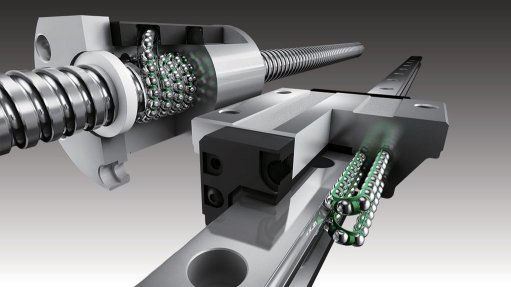
As the timeframe needed to produce automotive vehicles is becoming increasingly shorter and the process significantly more efficient, the design and implementation of automotive components and assembly production equipment must also be completed in shorter timeframes, says motion-control solutions specialist DC Auto-Motion.
Subsequently, the automotive manufacturing industry needs to focus on reducing the time needed to design and assemble production equipment, DC Auto-Motion director Dave Cawood tells Engineering News, highlighting the design of cost-competitive, efficient and sustainable operating equipment, as well as enhanced productivity, as priorities.
He adds that the size of the equipment must also be reduced to minimise energy consumption and industrial waste.
Therefore, DC Auto-Motion has supplied the Japanese THK linear-motion (LM) product range, comprising the THK caged-ball technology, to several automotive industry players in the past year to help assist with their needs, Cawood says.
Automotive end-users who have incorporated the THK caged-ball LM guides, a component and caged-ball technology, into their production lines since 2013 to date, include automotive majors Ford and Toyota, a German automotive manufacturer, and wheel manufacturers Ronal Wheels Group and Maxion Wheels Group, says Cawood, adding that DC Auto-Motion supplied these companies through its machine builder and automation solution specialist customers.
He emphasises that the THK range of LM systems, LM guides, ball splines, ball screws and electric actuators assists diverse machine applications such as tooling and jigging fixtures in automotive component and vehicle assembly lines. The products provide a compact structure, as well as accurate and steady guidance.
Caged-Ball Technology
“Key features of the THK caged-ball LM guides include high rigidity, high accuracy, continuous repeatability and a long-term, maintenance-free operation with a long service life,” stresses Cawood, adding that the technology can accommodate a high workload.
Other features of the caged-ball technology, in conjunction with a self-lubricating function, include a clean working environment, as oil leakage from the hydraulic cylinder is avoided, and a higher-speed operation with THK.
He further highlights that DC Auto-Motion implemented a variety of LM guides, including the SHS series of caged-ball LM guides at tyre manufacturer Bridgestone South Africa’s production lines, at the company’s plants in the North West, in March.
Meanwhile, THK actuators, such as the caged-ball rigid, the LM, the SKR, the Standard KR and the KRF actuators, can also be applied to reduce energy costs, suggests Cawood, reiterating THK’s sentiments that the actuators assist in saving design time with three-dimensional (3D) data from THK, which saves time in assembling.
Cawood notes that, to date, the THK range of products has been used in various automotive component and vehicle assembly lines. THK KR actuators are used in automotive vehicle parts positioning devices, which allow for a single line to accommodate different car model sizes, while other THK actuator models have been applied in resin part pressure bonders.
THK caged-ball LM guides have also been implemented in a 3D measuring instrument, while the BTK ball screw and SHS LM guide have been applied in a motorised press-fitting machine.
Local Representation
DC Auto-Motion started representing THK in 2012 and was appointed as the official Southern African THK distributor in mid-2014.
T
he company supplied the THK KRF 5 LM actuator to a local alloy wheel inspection machine manufacturer to inspect accurate measurements on Formula 1-forged magnesium wheels.